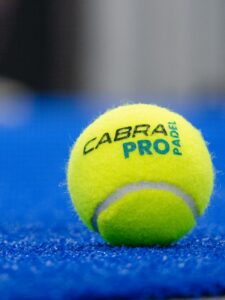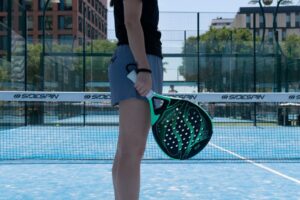Advanced Padel Terminology for Serious Players
3 min read
Advanced Padel Terminology for Serious Players
If you’re a serious padel player, you’re likely familiar with the basic terminology of the sport. Terms like “smash,” “lob,” and “volley” are common knowledge among players of all levels. But as you advance in your padel career, you’ll encounter more complex and nuanced terminology that will help you better understand the game and communicate with other players.
In this article, we’ll explore some of the most important and advanced padel terms that you need to know to take your game to the next level.
The Court
To start, let’s cover some terms related to the court itself. You probably know that the court is divided into two halves by a net, and each half is further divided into two service boxes. But did you know that the area between the service line and the net is known as the “T”? This is an important area of the court, as it is where most volleys and smashes take place.
Another important term is “screen.” A screen occurs when a player’s body or paddle obstructs the view of the opponent, making it difficult to see the ball. Screens are forbidden in padel, as they give an unfair advantage to the player committing the screen.
The Serve
The serve is one of the most important shots in padel, and it has its own set of terms that you’ll need to know. For example, a “flat serve” is a serve that travels in a straight line, while a “slice serve” has topspin and curves away from the receiver. A “kick serve” has backspin, which causes the ball to bounce quickly and high after it lands.
You may also hear terms like “ace” and “double fault” when discussing the serve. An ace occurs when the serve is so good that the receiver can’t return it, while a double fault is when the server fails to get both serves in play.
Shot Types
There are many different types of shots in padel, and each has its own name and purpose. For example, a “bandeja” is a high lob that is used to defend against hard smashes, while a “víbora” is a shot that is hit low and parallel to the ground, making it difficult for the opponent to return.
You may also hear terms like “chiquita” and “smash vibora.” A chiquita is a quick, short shot that is used to surprise the opponent, while a smash vibora is a powerful smash that is hit diagonally to the opponent’s side of the court.
Tactics and Strategy
As you advance in your padel career, you’ll need to be able to think strategically and use tactics to outmaneuver your opponents. Some important terms to know in this area include “lobbing,” which involves hitting high shots that force the opponent back, and “counterattacking,” which involves quickly returning a hard shot in order to regain control of the point.
You may also hear terms like “deception,” which refers to feinting or tricking the opponent into thinking you’re going to hit one shot, when in fact you’re going to hit another.
Conclusion
As you can see, there are many advanced padel terms that you’ll need to know in order to communicate effectively with your fellow players and take your game to the next level. Whether you’re a seasoned pro or a beginner looking to improve, taking the time to learn these terms and understand their meanings will help you become a better player.
So, the next time you’re out on the court, try using some of these padel terms and see how they can help you improve your game. Who knows, you may even impress your fellow players with your newfound knowledge!







